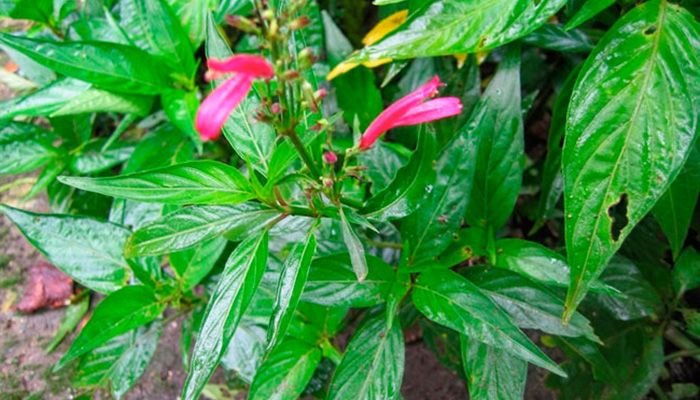Chinchamochina or sangria is a medicinal plant that has many benefits and healing properties for humans and is traditionally consumed for its cooling effect. The first species were found in the Andes and South America, specifically in the area of Ecuador, Colombia and Venezuela.
This plant is also known as: Camedro, Germandrina, Carrasquilla, Grass of the Seven Sangria, Asperones, Aserrones, Asperoncillo, Gayuba, Blood Grass, Chupamieles, Asperilla or Asperillo, Skewer, Rascaviejas, Asperon Thyme, Grape Bears, Zamarilla.
This plant has been used for many years to treat certain health problems due to its high content of resin, gums, glycosides and tannins, in addition to containing silicic and oxalic acids, it is also known for its restorative property of blood and is recommended in case of low hemoglobin, lechina or rubella.

Fuente
Benefits.
- Stops the formation of kidney stones.
- It is diuretic.
- It is a great anesthetic, sedative and stimulating tonic.
- Increase hemoglobin levels.
- Improves digestion and eliminates intestinal parasites.
- Ideal to treat diarrhea, migraines and fever.
- It is used for the treatment of rheumatism, asthma, bronchitis and laryngitis.
- It purifies the blood and the digestive system.
- Fights constipation and anemia.
- Relieves menstrual cramps.
- It is insect repellent.
- Control bronchial spasms.
- It reduces and relieves itchy skin.
- It is used to combat dengue and chikungunya.
- It helps heal the skin.
- Among others.
Uses of sangria or chinchamochina.
Traditionally with this plant infusions and baths are made.
To prepare the infusion we need:
- 1 liter of water.
- 50 g of sangria leaves.
- Sugar or honey to taste.
Process.
- Boil the water.
- Add the sheets.
- Let stand for several minutes.
- Sweeten to taste.
- Drink 2 to 3 cups a day, either cold or hot.
To prepare bathrooms we need:
- Stemless leaves.
- Water.
Process.
- Cut the leaves with your hands.
- Add in the water.
- Place it in the sun until the water turns red.
- The leaves can be removed from the water and bathed only with the red liquid; Or you can leave them and bathe "with everything" twice a day.

Fuente
Cultivation of sangria or chinchamochina.
The ideal time to sow is in spring.
They do not require so much care.
They can reproduce by seeds and stakes.
These plants develop in underdeveloped soils originated from calcareous or Franco-calcareous materials.
They can be sown in pots, gardens, patios, terraces and balconies.
The more exposure to the sun you have, they will bloom faster, but they can also be grown in semi-shade.
They are able to withstand light and sporadic freezing temperatures.
It is necessary that the soil be very well drained if the land is alkaline and poor.
They are very resistant to drought, so irrigation is not very frequent.
It is advisable to prune them lightly at the beginning of autumn to favor flowering.
These plants are resistant to the usual pests but are sensitive to excess moisture.
The harvest of this plant is concentrated both in the leaves and in the flowers.

Fuente
Recommendations.
Consult your doctor before going for natural medicine.
It is not recommended in pregnant women.
Excessive consumption may cause irritation to the stomach mucosa.
Great job, we @farms find this post informative and educative to this community and sub-community.
Resteem
Hello! I find your post valuable for the wafrica community! Thanks for the great post! We encourage and support quality contents and projects from the West African region.
Do you have a suggestion, concern or want to appear as a guest author on WAfrica, join our discord server and discuss with a member of our curation team.
Don't forget to join us every Sunday by 20:30GMT for our Sunday WAFRO party on our discord channel. Thank you.